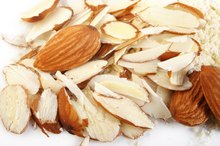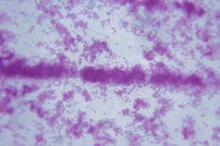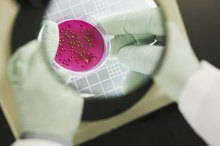Differences Between Strep A & Strep B
Strep A and strep B, or Streptococcus pyogenes and Streptococcus agalactiae respectively, are closely related microorganisms with several characteristics in common 2. First, they both produce beta-hemolysis, which means the organisms contain hemolysins, which will lyse red blood cells in agar that contains blood. Secondly, they both appear microscopically when stained with the gram stain method as gram positive cocci in chains. Translated this means you would see purple spheres together side-by-side in a chain formation under the microscope. Third, infections by both organisms are treated successfully with penicillin and related antibiotics. The aforementioned are a few of the similarities. There are numerous differences between the two streptococcus species to include their cell wall structure, factors that make them pathogenic or virulence factors, how the organism is acquired, and the resulting diseases 2.
If you are experiencing serious medical symptoms, seek emergency treatment immediately.
Differences in Cell Wall Composition
Many years ago, a pioneering microbiologist named Rebecca Lancefield established the Lancefield grouping system used to differentiate the cell wall polysaccharides that distinguish strep A from strep B and other beta-hemolytic streptococcus 2. The cell wall polysaccharide of S. pyogenes is composed of a polymer of N-acetylglucosamine and rhamnose, while that of S. agalactiae is composed of a rhamnose-glucosamine polymer. This basically means that testing for these different cell wall antigens can help in differentiating between the two streptococci.
- Many years ago, a pioneering microbiologist named Rebecca Lancefield established the Lancefield grouping system used to differentiate the cell wall polysaccharides that distinguish strep A from strep B and other beta-hemolytic streptococcus 2.
Virulence Factors
Differences Between Antibody & Antibiotic
Learn More
The virulence factors for each organism differ greatly with strep A having many more factors to help the organism cause disease. Streptococcus pyogenes has protein F, which helps the organism attach to epithelial cells 2. The M protein is part of the outer surface of the cell wall and serves an antiphagocytic mechanism. The organism also produces several enzymes and hemolysins that contribute to tissue invasion and destruction. In addition, strep A also produces various toxins that can cause anything from a rash to organ failure, e.g., scarlet fever and toxic shock respectively. Strep B produces a few virulence factors like lipoteichoic acid, which contributes the organism's adherence to human cells as the initial step of infection.
- The virulence factors for each organism differ greatly with strep A having many more factors to help the organism cause disease.
- Strep B produces a few virulence factors like lipoteichoic acid, which contributes the organism's adherence to human cells as the initial step of infection.
Disease
The spectrum of disease is a big difference between the two streptococci. Strep A is usually transmitted person-to-person by respiratory droplets through coughs and sneezes ,or by direct contact with these secretions. Common diseases caused by strep A include pharyngitis or strep throat, impetigo, cellulitis rheumatic fever, scarlet fever, necrotizing fasciitis and toxic shock syndrome.cause:
- Common diseases caused by strep A include pharyngitis or strep throat
- impetigo
- cellulitis rheumatic fever
- scarlet fever
- necrotizing fasciitis
- toxic shock syndrome
Related Articles
References
- Todar's Online Textbook of Bacteriology- Strep pyogenes
- Martin JM. The mysteries of streptococcal pharyngitis. Curr Treat Options Pediatr. 2015;1(2):180-189. doi:10.1007/s40746-015-0013-9
- Centers for Disease Control and Prevention. Group A streptococcal (GAS) disease. Updated November 1, 2018.
- Penn Medicine. Strep throat (streptococcal pharyngitis). Updated July 11, 2019.
- Wessels MR. Pharyngitis and scarlet fever. In: Ferretti JJ, Stevens DL, Fischetti VA, editors. Streptococcus pyogenes: Basic Biology to Clinical Manifestations. Oklahoma City, OK: University of Oklahoma Health Sciences Center. Updated March 25, 2016.
- Shulman ST, Bisno AL, Clegg HW, et al. Clinical practice guideline for the diagnosis and management of group A streptococcal pharyngitis: 2012 update by the Infectious Diseases Society of America. Clin Infect Dis. 2012;55(10):e86-102. doi:10.1093/cid/cis629
Writer Bio
Robert Herriman has been writing for the the web site, examiner.com since 2009 as the Infectious Diseases Examiner. Herriman has experience in the fields of microbiology and infectious diseases since 1989. He has previously written for "Continuing Education Topics" publication for the American Medical Technologists. Herriman holds a Master of Public Health from the University of South Florida.









